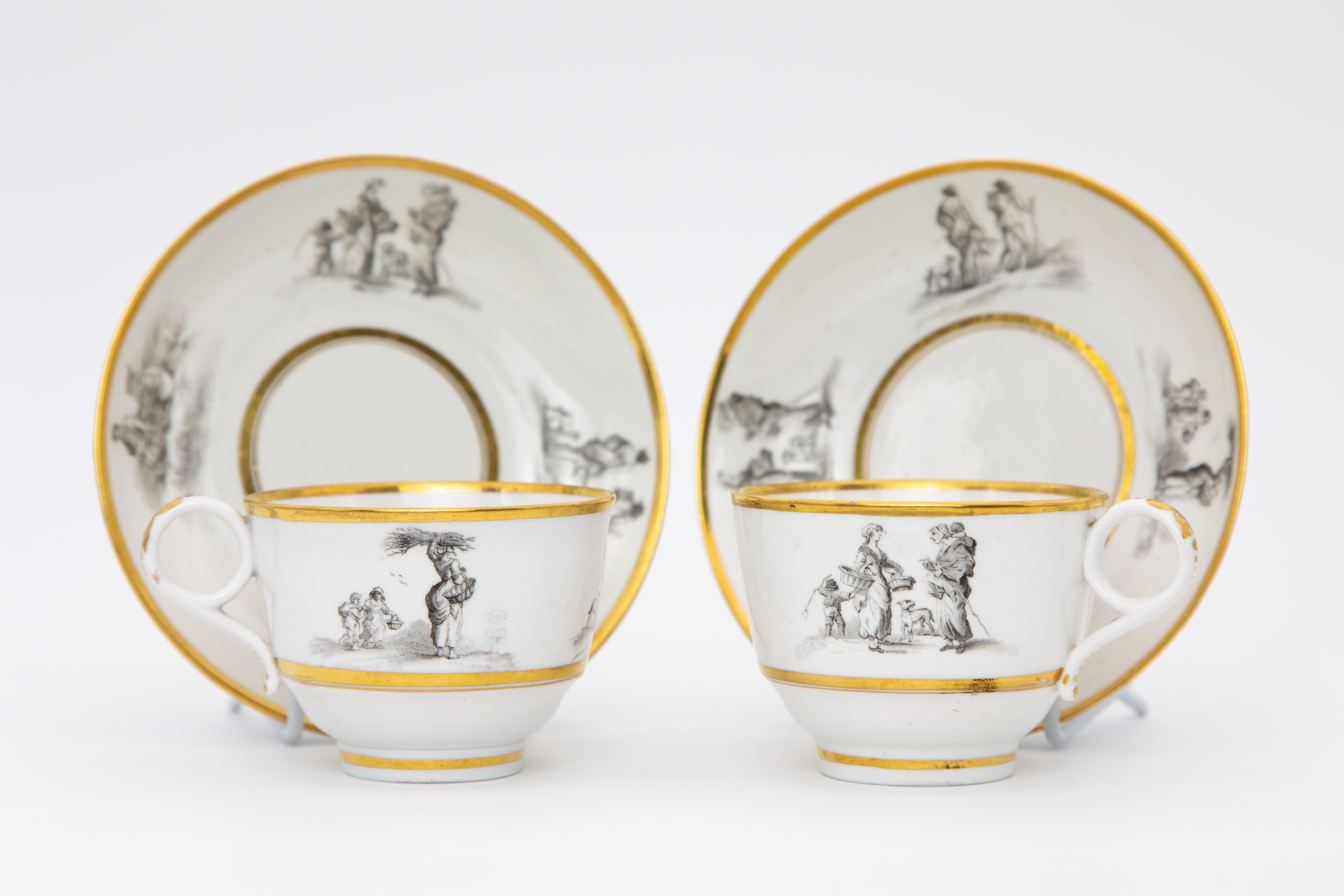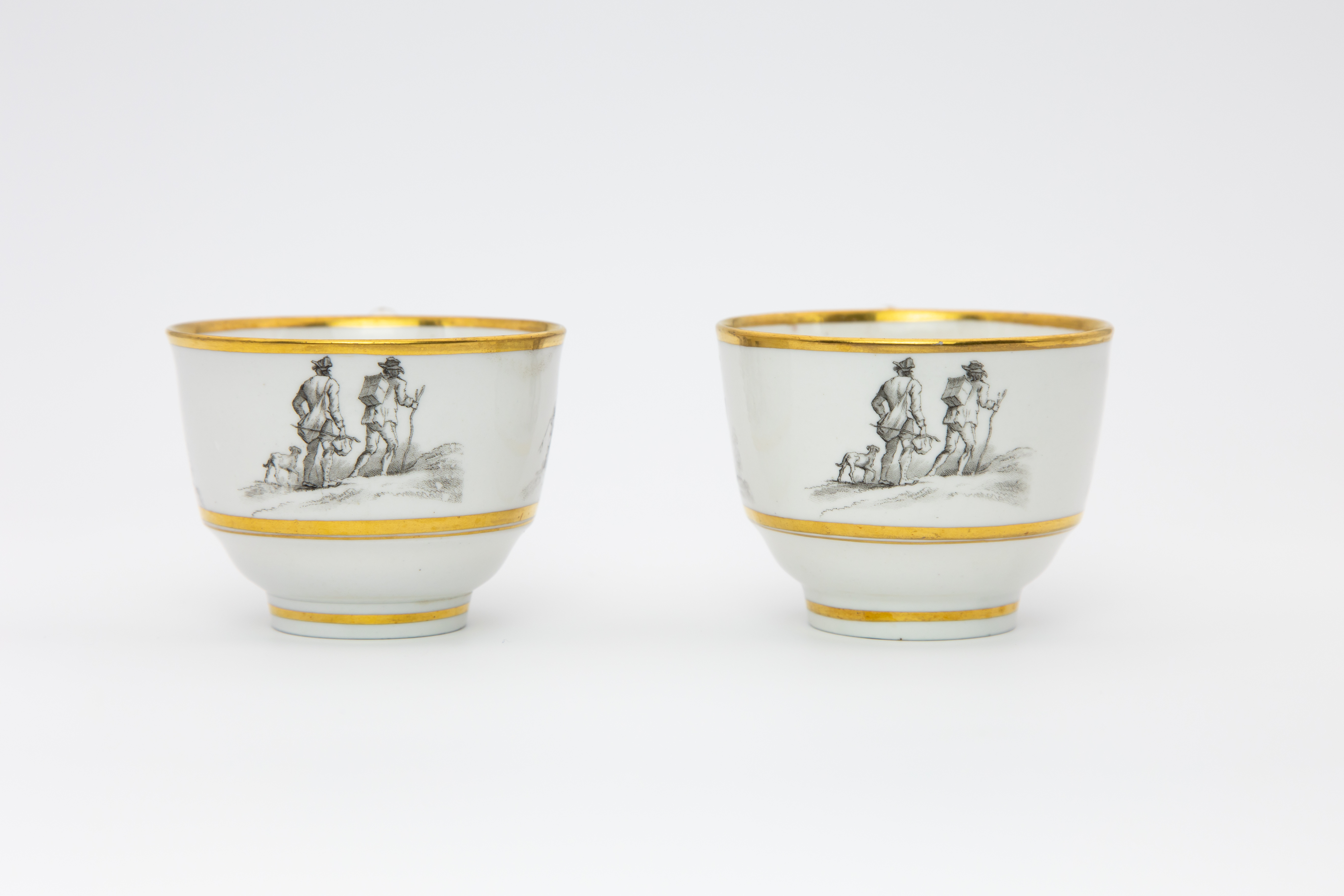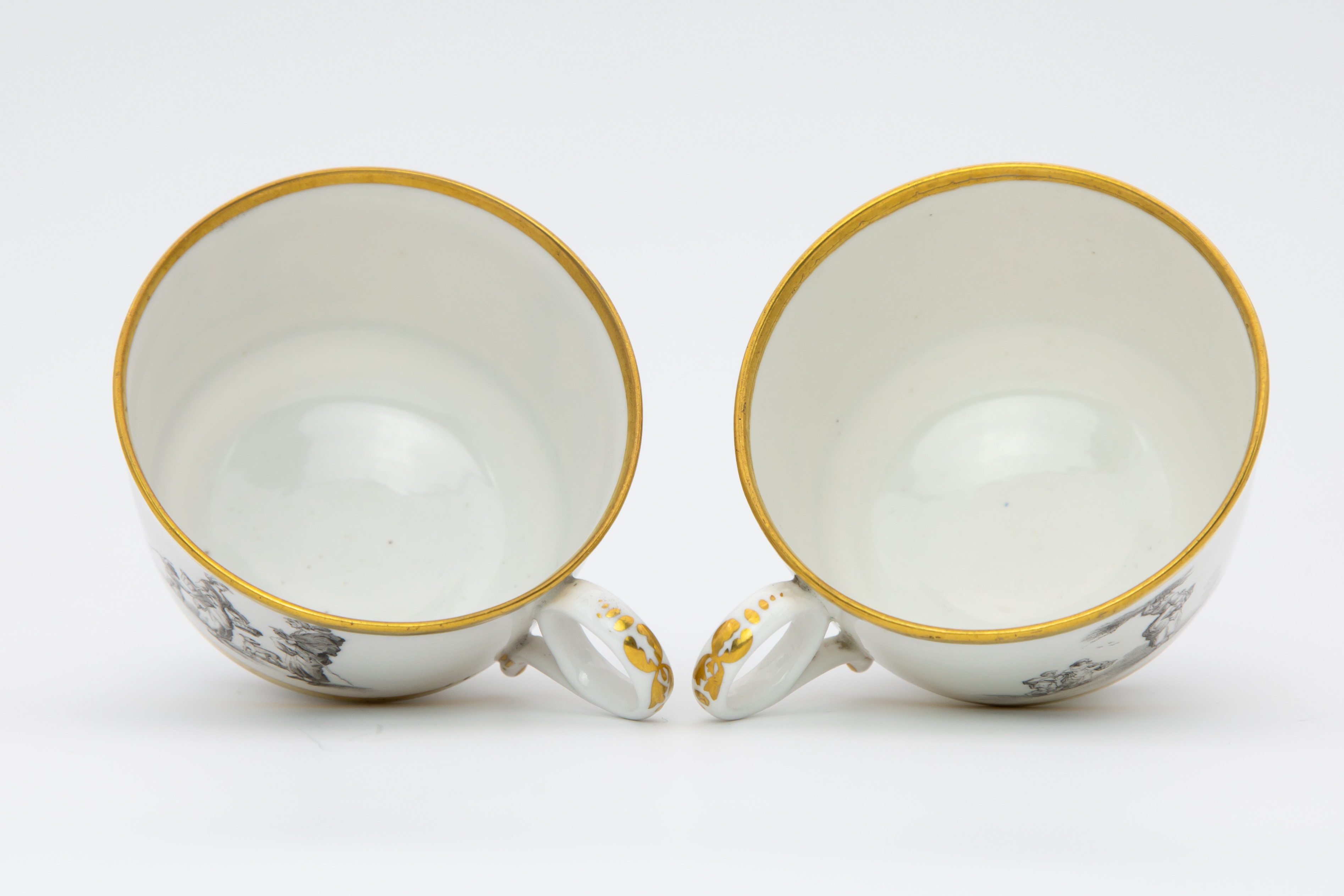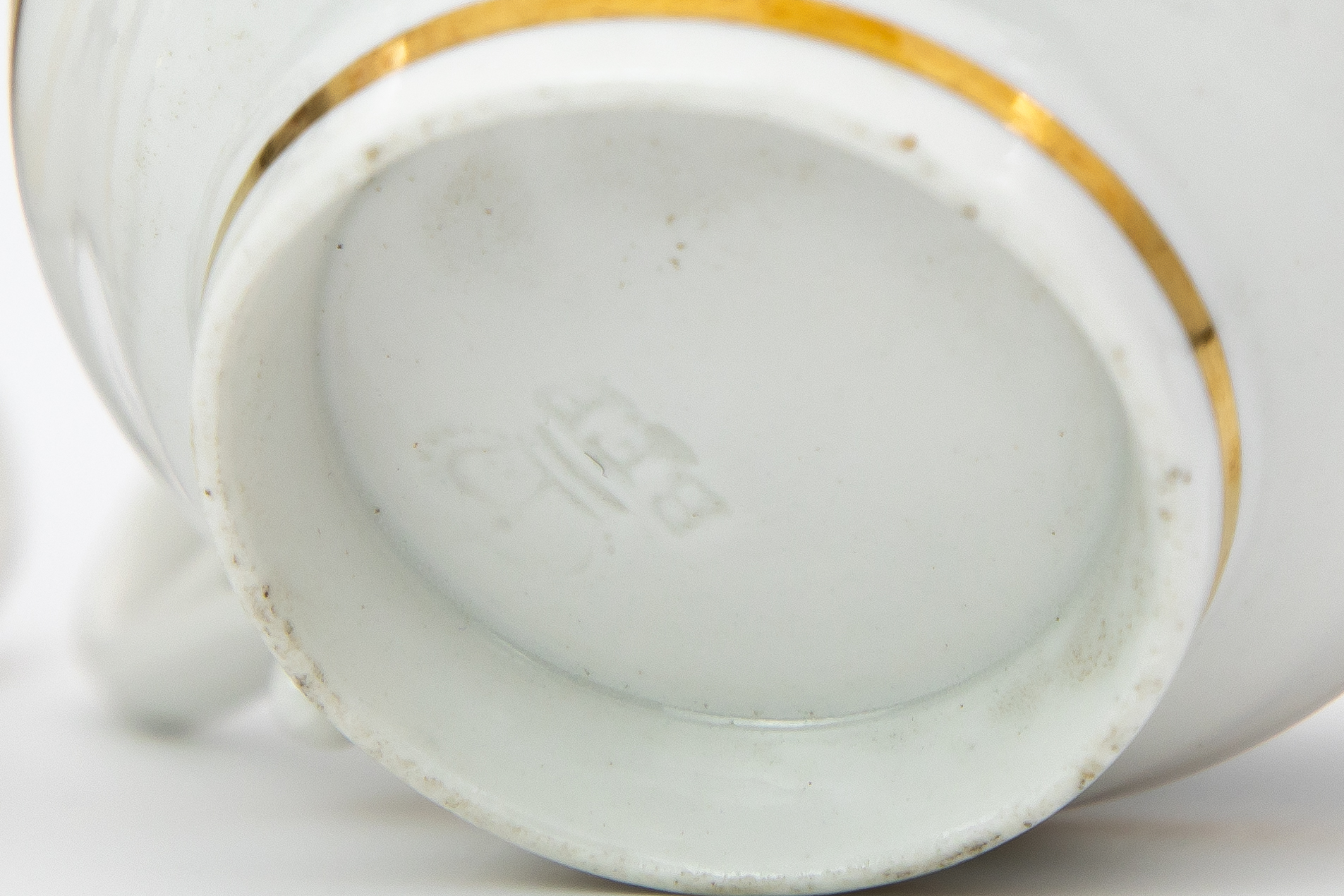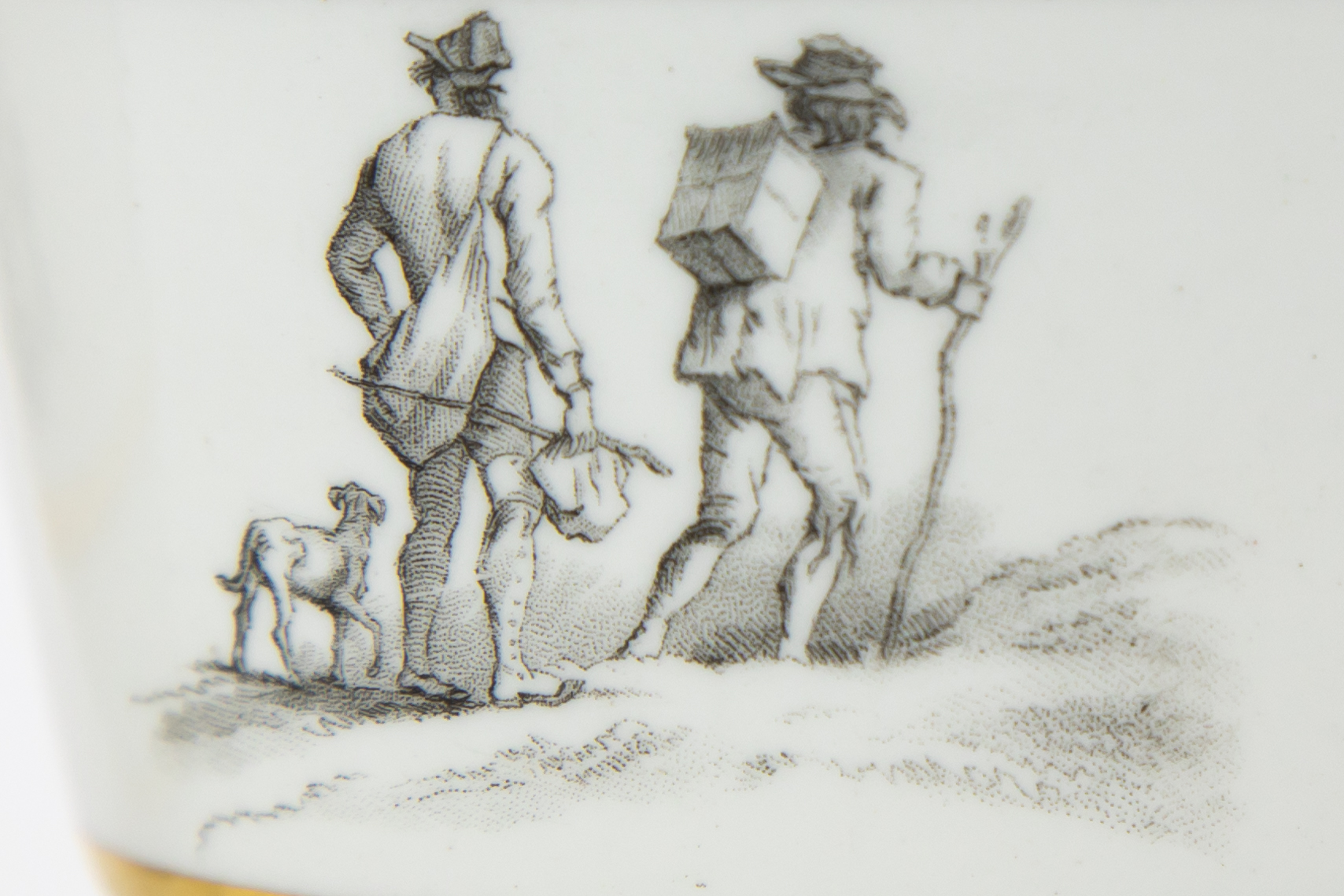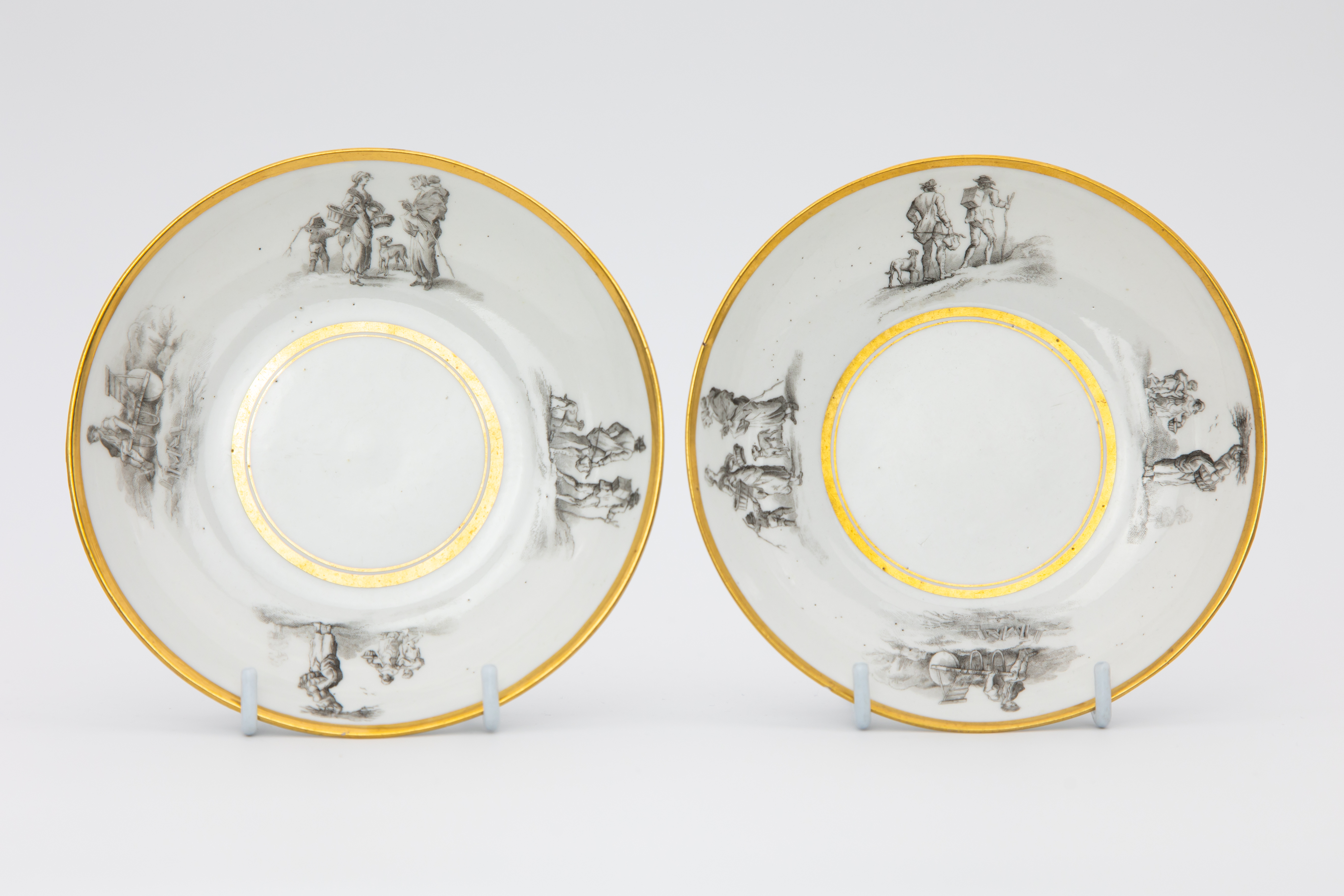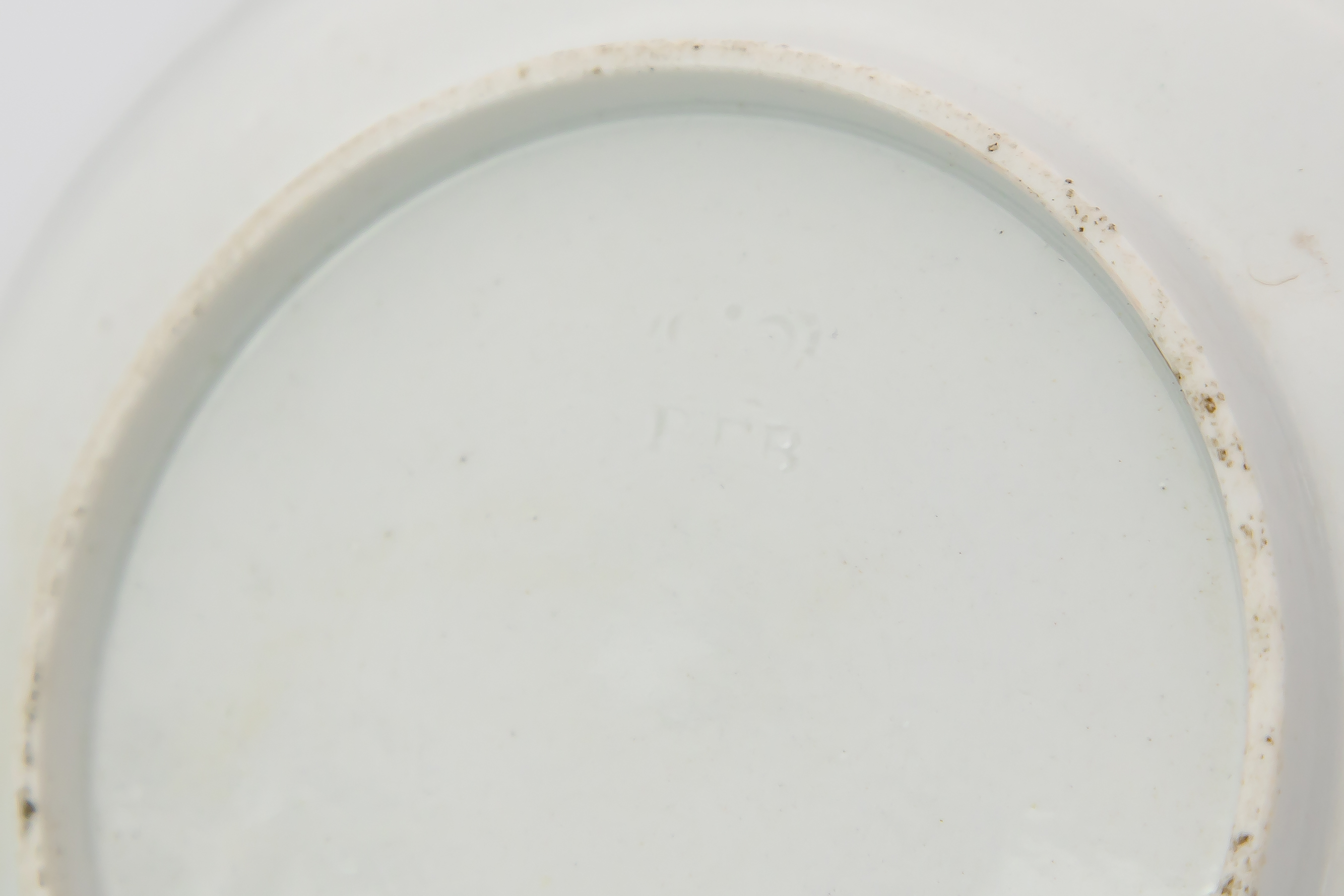The bat printing process was introduced in England at the end of the 18th century, and was so called after the glue slabs used for printing instead of traditional paper. The process was quite complicated and thus only in use for about 30 years, making bat-printed pieces such as this pair of Barr, Flight & Barr porcelain teacups and saucers rather rare. The pair’s black bat-printed transfer designs, comprised of tiny dots upon close inspection, show vignettes of bucolic, idealized country life. These scenes on pure white porcelain are enhanced by simple and delicate gilded bands.
The bat printing process was introduced in England at the end of the 18th century, and was so called after the glue slabs used for printing instead of traditional paper. The process was quite complicated and thus only in use for about 30 years, making bat-printed pieces such as this pair of Barr, Flight & Barr porcelain teacups and saucers rather rare. The pair’s black bat-printed transfer designs, comprised of tiny dots upon close inspection, show vignettes of bucolic, idealized country life. These scenes on pure white porcelain are enhanced by simple and delicate gilded bands.
Essay
An essay for this object is forthcoming. Sign up for our email list to be the first to know when this essay is published!
Thank you!
You have successfully joined our subscriber list.
Condition
Excellent, with some original frit marks.
For a detailed condition report, please contact us.
Excellent, with some original frit marks.
For a detailed condition report, please contact us.
This item ships free to the continental US, and globally for a flat-rate fee of $50.
All objects are packed with utmost care by our team of expert fine art shippers. All items are shipped with parcel insurance.
For more information on our shipping policies, please visit our FAQ Page.
An essay for this object is forthcoming. Sign up for our email list to be the first to know when this essay is published!
Thank you!
You have successfully joined our subscriber list.

